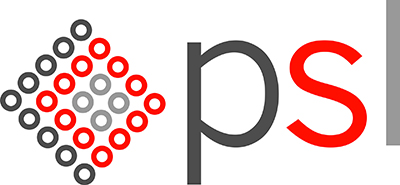In the pharmaceutical industry, solid-liquid separation is conducted in applications such as biocatalysis, active pharmaceutical ingredient (API) purification, and chromatography, to name a few. The separation process can be carried out through a range of instruments, but the most appropriate method will depend on the properties of the mixture. Because of the importance of solid-liquid separation in the pharmaceutical industry, PSL will provide an overview of its principles and applications in this blog post.
What is Solid-Liquid Separation?
As the name suggests, solid-liquid separation is a method to separate solids and liquids from a mixture so that they are available as individual components, which is crucial when just one phase is needed. The phase not required becomes a by-product or waste of the experiment, and both phases remain isolated from each other. This is a common process in the pharmaceutical industry, as raw materials must be pure and free from contamination to ensure they are safe for their intended use.
The process is conducted in several stages, including pre-treatment, concentration, separation and post-treatment, with optional stages depending on the mixtures needing separating. The systems available for solid-liquid separation include filters, centrifuges, and some combined equipment should a researcher require them. Some processes may require drying to be added on as an extra feature, and this can be conducted in a separate piece of equipment or, if the set-up allows, in combination with existing instruments.
What Solid-Liquid Separation Methods are used in Pharmaceutical Production?
The primary solid-liquid separation paradigms used in pharmaceutical preparation are filtration, centrifugation, and evaporation. Within each is distinct methods, and there is often significant overlap between the different techniques in order to yield specific results. For example, active pharmaceutical ingredients (APIs) are often precipitated from a solution prior to a more robust method like depth or membrane filtration or even filtering centrifugation. Multiple solid-liquid separation methods are generally used to isolate products in a sequence; thus, product transfer is an important consideration to bear in mind. It is also important to consider the subsequent processing steps, such as drying, when looking into product transfer.
Options for Solid-Liquid Separation
As previously mentioned, several solid-liquid separation methods are used in the pharmaceutical industry depending on the phases required for the desired product. PSL will outline some of them in this section.
Centrifuge
Centrifuges can be used in several applications, and the user must decide when they are most suitable. A rotor and centrifugal force are used to separate liquids of different densities and a solid from each other, such as water, oil and sediment. Different types of centrifuges are available based on size, speed and the intended application, but they are commonly used in biochemistry, cellular and molecular biology.
Depth Filter
Depth filters are used to capture and remove particles, often referred to as contamination, from a liquid phase. It is a cost-effective method and can hold a large amount of solids before they need to be cleaned or replaced. In the pharmaceutical industry, depth filters are used for bioprocessing and cell harvesting as they retain a high quantity of particles without reducing the efficiency of the separation process.
Rotary Evaporator
Rotary evaporators are used for removing solvents from a sample via a method of evaporation. They are ideal for solvents with low boiling points. They offer an accurate, more efficient separation technique as they increase a sample’s surface area, which enables a solvent to be separated quickly.
Single Mesh Filter
Single mesh filters are used in solid-liquid separation to remove larger particles from a sample and are common in pharmaceutical and biochemical laboratory applications where contaminants and impurities must be removed.
The Advantages of Solid-Liquid Separation
Solid-liquid separation is a critical part of production in the pharmaceutical industry as it ensures active ingredients are purified, contaminant-free, and safe for use. Any contamination in a mixture increases hazards to operatives during pharmaceutical production and in its intended application. It is also a crucial stage in quality assurance, as a drug product must have a consistent appearance and composition.
Other benefits of solid-liquid separation include the following:
- Improved efficiency of washing and isolating solids in complex synthesis processes
- Improved safety measures
- Isolating active ingredients
- Regulatory compliance
Powder Systems Limited and Solid-Liquid Separation
Powder Systems Limited are pharmaceutical and chemical processing experts, offering a wide range of solutions for research, development, and large-scale applications. Their solutions are suitable for filtration, drying, and other processes, such as product sampling and product discharge, and PSL also provide aftercare services to support their clients.
Filtration and Drying
PSL's design and manufacture filter dryer systems used in pharmaceuticals and are recognised worldwide for their efficiency in solid-liquid processing. PSL's Agitated Nutsche Filter Dryers (ANFD) can scale-up from the laboratory to commercial manufacturing via GFDⓇ, SimpleFilter and production-sized ANFD ranges. These systems efficiently wash and isolate solids while overcoming traditional production method limitations.
ANFD is a piece of equipment that facilities filtration and drying processes by combining the two into a single operation. It is commonly used in the pharmaceutical industry to produce APIs and other fine chemicals.
In a filter-dryer, the mixture of solid and liquid is filtered under pressure through a filter medium, which separates the solid and liquid components. The filter cake, which is the solid material, is then dried by introducing a gas, such as nitrogen or air, through the cake. This gas helps to remove the remaining liquid from the solid material and results in a dry, free-flowing powder. This is an incredibly simple explanation of the process, and there are various peripheral benefits and considerations. For more information, refer to PSL's detailed blog on How an Agitated Nutsche Filter Dryer Works. ANFD provides several benefits over traditional drying methods, including reduced processing times, improved product quality, and lower production costs. It is particularly useful for products that are heat-sensitive, hygroscopic, or prone to oxidation.

